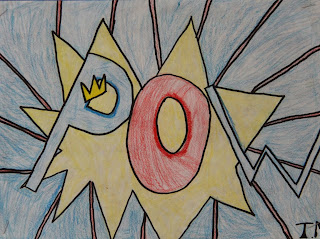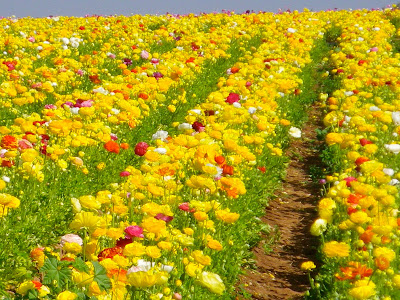Grandmaman had a wonderful morning with a group of very talented four year old artists. We began the morning with a story about a little boy who wanted very much to catch his very own star, "How to Catch a Star" by Oliver Jeffers.
 |
| Logan listens to the story and makes a plan of how to catch his very own star. |
 |
| Logan prepares his paper by choosing where to put his star stickers, pushing them on and then painting the watercolour paper with water. |
 |
| Logan's "Catch a Star"painting |
Brief steps for the project:
Tape watercolour paper to a board to create a border.
Lightly draw a horizon or beach line (curvy or straight).
Using the edge of a tealight for wax, trace over the horizon line.
Place a large star sticker where the sand will be.
Place a variety of star stickers in the sky.
(Choose a number and size of the stars to focus on.)
Using the edge of a tealight for wax, make wax streaks in the sky for shooting stars.
Paint the sky with water, then paint over with your choice of sky colours with watercolour paint (wet on wet technique).
Paint the sand area with water, then paint over with your choice of sand colours with watercolour paint (wet on wet technique). Sprinkle salt on sand.
When the painting is dry remove the star stickers and the tape.
It is January 2014 now and Sadie invited Grandmaman to her nursery school to paint stars. These little artists were three, four or five years old. Before we began our painting we read the story "How to Catch a Star" by "Oliver Jeffers" and then we sang "a twinkle song" to the tune of "Frère Jacques".
Twinkle, twinkle,
Twinkle, twinkle,
Little stars,
Little stars,
Catch me if you can,
Catch me if you can,
In the sand,
In the sand!
 |
| Sadie paints around her stars. |
 |
| Sadie proudly shows off her "Catch a Star" painting. |
 |
| Today we used larger stars with a focus on the number five. |
 |
| We talked about the different formations we could place our stars. |
 
 |
Oliver, at 18 months decided that he would like to create a star painting as well. He chose big stars and little stars and with a little bit of help from Grandmaman to take the backing off the stickers he placed them on the watercolour paper. Once he had placed them on the paper, Oliver had fun pushing hard on them to make sure they were well "stuck".
Next Oliver took a tealight (wax) and made marks all over the paper to create shooting stars
(wax resist technique).
Finally Oliver painted the whole paper with water. Once the paper was wet he painted some areas with yellow watercolour and other areas with different hues of blue(wet on wet technique)
|


































